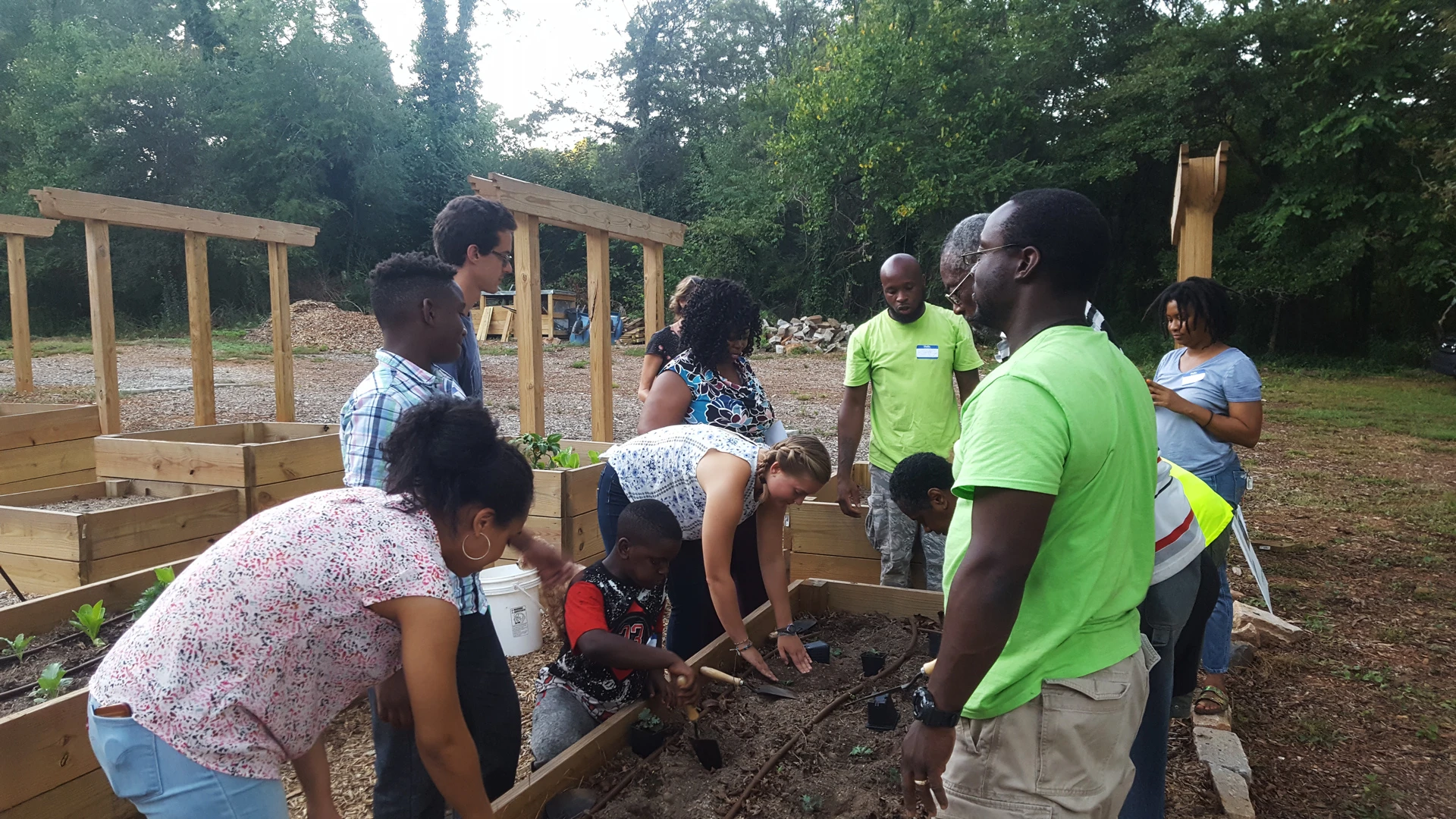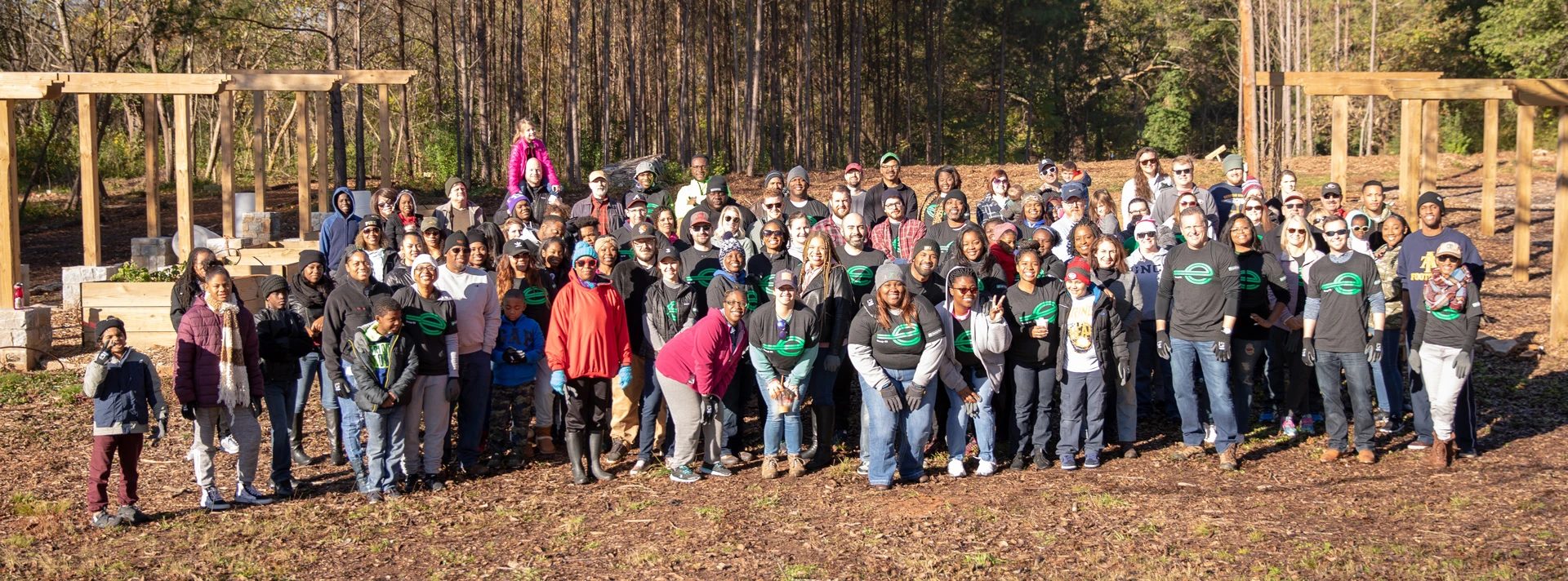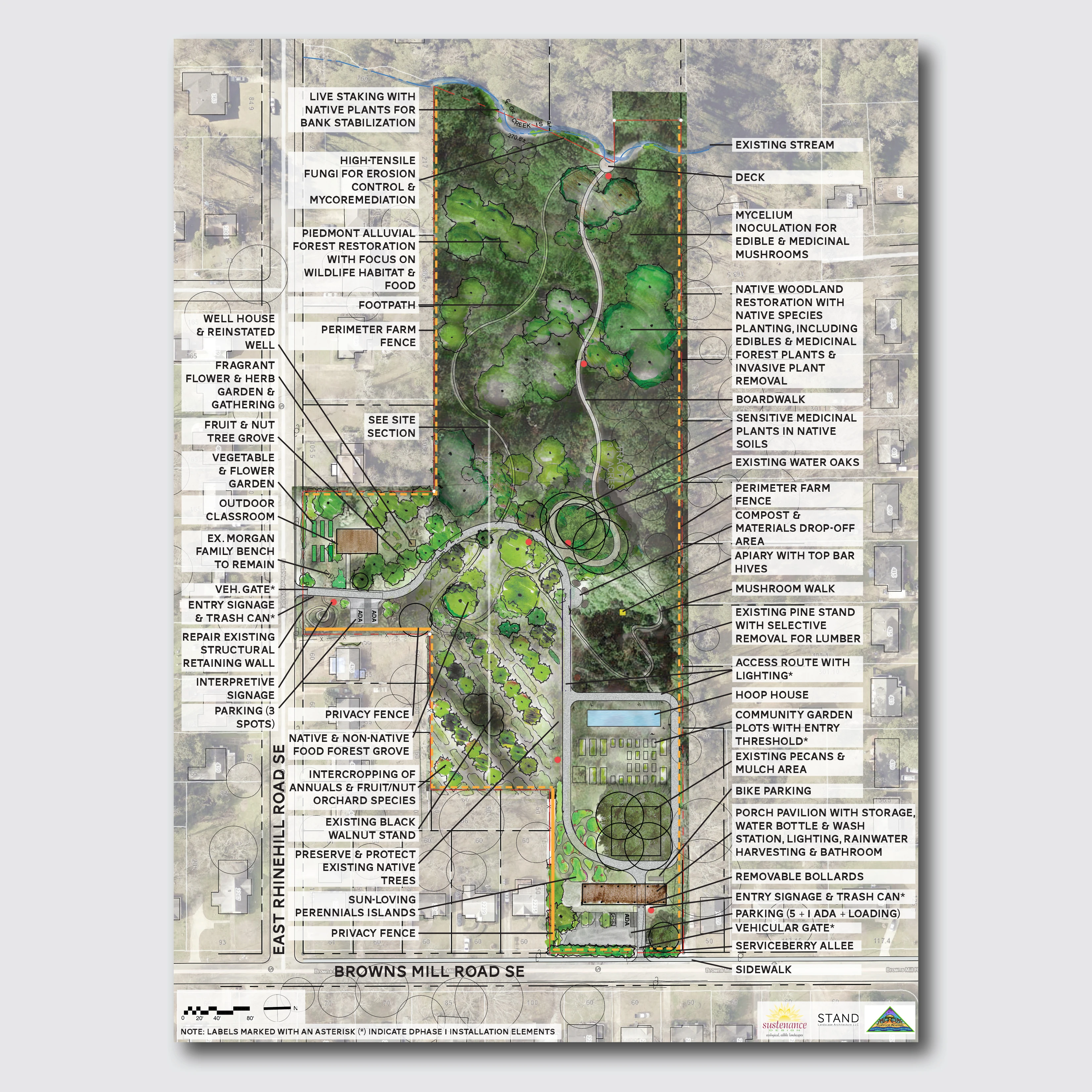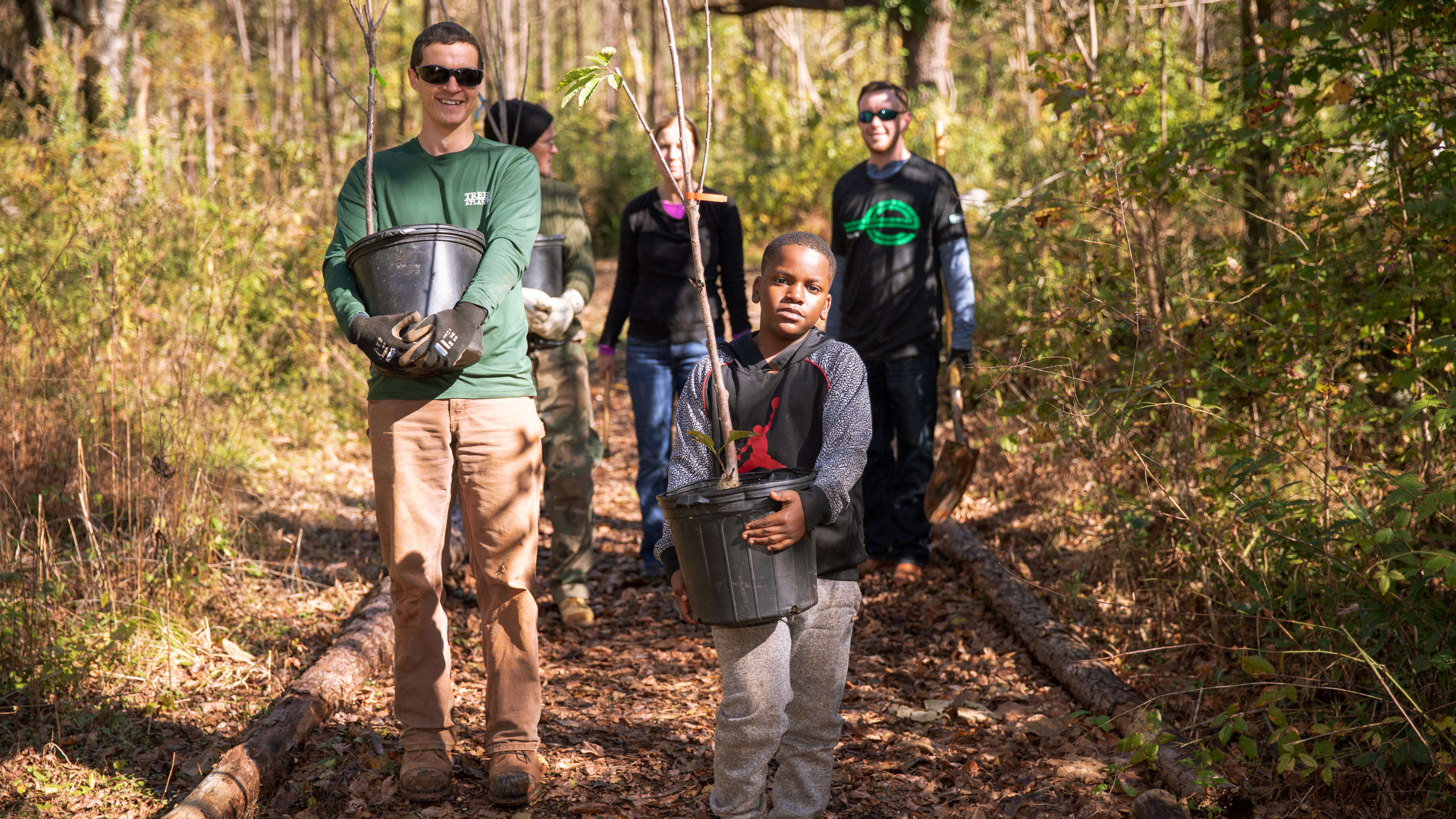The land was supposed to be developed into townhouses, but that never happened. So an old pecan farm sat vacant and overgrown for years inside Atlanta’s city limits, right near the Lakewood-Browns Mill community, a food desert where a third of the population lives below the poverty line.

Now, through the efforts of the city of Atlanta, the Conservation Fund, many local nonprofits, and volunteer labor, the property has been purchased and converted in the nation’s largest edible forest. It’s a public park that’s open now and will expand in the coming years. It houses not just planter boxes for the community to grow produce like tomatoes and squash on their own, but a network of trails through a landscape designed to be eaten, including more than 100 fruit and nut trees that grow figs, apples, and plums.
“It’s not some perfectly designed landscape architecture plan,” says Stacy Funderburke, Conservation Acquisition Associate at the Conservation Fund. “If you were to see the before and after photos, you’d say it’s incredible. But at the end of the day, I wouldn’t say aesthetics are the main driver of this project.”

Instead, the goal is to grow fresh produce in an accessible way, and in a space that can be enjoyed by the community. Atlanta isn’t the only city with food accessibility issues, but there it’s a particularly pressing crisis. Largely due to inadequate public transportation, more than half a million people living in Atlanta and surrounding areas are classified as living in a food desert. (Keep in mind that Atlanta itself has a population of only half a million people in the first place.) In turn, the city of Atlanta has the goal to get 85% of all residents within a half mile of fresh food by 2021. And such a large-scale project can make a dent in meaningful ways, even if a fully utilized acre of farmland can only feed about 30 people–and there are 2,000 residents in the local community alone.
“With these types of projects, I don’t think that we should pretend they’ll feed everyone in a food desert,” says Funderburke. “But given the size, seven acres, it’s going to produce an impressive amount of food.”

Production is only expected to increase over time. Crucially, the plants being chosen are an investment into the future. Apple and nectarine trees can take years to fruit, but once they do, they grow fruit for decades. That means in this community forest, generations of people will be free to walk by and pick their own snack.
The overall build-out of the space hasn’t cost much. It has required a few hundred thousand dollars in investment, which included purchasing the land, stocking it, and staffing it with two people to help maintain the space and educate students and volunteer urban gardeners.

The hidden expense is manpower. While the city’s Parks Department will handle some maintenance into the future, managing fruits and veggies take a lot of ongoing work. More than 1,000 volunteers have assembled for hundreds of hours of work inside the forest. Each Wednesday, a group gets together to water the plants. “This is outside the box of normal. This is not where you come in and mow and blow and move on,” says Funderburke. But enjoying the space is as easy as any other park. And anyone–even without volunteering–is welcome to come by and harvest what they like from the landscape.
Now that the park has been jump-started by the community–and ownership is being officially transferred from the Conservation Fund, which acquired the property and fixed it up, to the city–the plan is to copy and paste the approach throughout Atlanta.
“The opportunity to replicate this is already coming up. The Parks Department is thinking about it,” says Funderburke. “It’s great to fast-forward five years from now. What if there were five of these food forests sprinkled around Atlanta? There could be. There’s enough land. It’s more about showing it’s possible.”
Recognize your brand’s excellence by applying to this year’s Brands That Matter Awards before the early-rate deadline, May 3.
